 Induction stove technology uses electromagnetic fields to generate heat directly within the cookware, offering a modern alternative to traditional gas or electric stoves. The technology operates through a coil of copper wire located beneath the stove’s surface. When electric current flows through the coil, it creates a magnetic field. This field induces an electric current in cookware made of ferromagnetic materials, like cast iron or stainless steel. The resistance of the cookware to this current generates heat, enabling cooking.
Induction stove technology uses electromagnetic fields to generate heat directly within the cookware, offering a modern alternative to traditional gas or electric stoves. The technology operates through a coil of copper wire located beneath the stove’s surface. When electric current flows through the coil, it creates a magnetic field. This field induces an electric current in cookware made of ferromagnetic materials, like cast iron or stainless steel. The resistance of the cookware to this current generates heat, enabling cooking.
Unlike gas or traditional electric stoves, induction stoves do not produce heat themselves. The process is highly efficient since heat is generated only in the cookware, minimizing energy loss. This design makes induction stoves faster in heating and more precise in temperature control. Additionally, the surface of the stove remains relatively cool to the touch, reducing the risk of accidental burns.
🛡 Upgrade to a safer kitchen with our premium infrared cooktop today!
Are Induction Stoves Allowed on Flights? Understanding Safety and Airline Regulations
Induction cooktop safety is a primary concern when considering whether these appliances can be used on flights. While highly efficient and widely used in residential and commercial settings, induction stoves pose unique challenges in an airplane environment. Their safety and functionality on flights largely depend on the aircraft’s specific regulations, security policies, and operational conditions.
Airplanes operate under strict rules for electrical devices due to safety concerns. Induction stoves, which work by producing an electromagnetic field to heat cookware, can potentially interfere with onboard systems if not properly regulated. The electromagnetic interference (EMI) generated by these devices may interact with sensitive avionics or communications equipment, making their use in-flight risky without explicit approval or safeguards in place.
👉 Ready to upgrade your kitchen? Check out our infrared cooktop now
Fire Hazards and Turbulence Concerns with Induction Stoves
Heating appliances of any kind are generally prohibited in airplane cabins due to fire hazards. Induction stoves, though designed to minimize the risks of open flames, still produce high heat levels. If misused or left unattended, they could pose a threat to passenger safety in such a confined and sensitive space.
Another significant safety risk occurs when turbulence disrupts normal flight conditions. Turbulence, often unpredictable, could cause hot cookware or liquids on the induction stove to spill, potentially leading to burns or other serious injuries. In severe cases, objects could be violently displaced, endangering passengers nearby.
These concerns highlight why portable induction stoves are generally restricted in-flight. Airlines’ established protocols aim to mitigate potential accidents from unexpected turbulence or dangerous heat sources.
Airplane Electrical System Compatibility with Induction Stoves
Understanding airplane electrical systems is crucial when discussing the compatibility of induction stoves during flights. Modern aircraft are equipped with intricate electrical networks designed to operate a wide range of systems crucial for navigation, communication, lighting, passenger comfort, and safety. These networks must maintain a consistent power supply, functioning within strict parameters to prevent disruptions.
Airplane electrical systems typically operate on a 115-volt AC power supply at 400 Hz, differing from standard household systems, which use 120-volt AC at 60 Hz frequency. This disparity creates an immediate challenge for standard induction stoves, as most are built for use with household power specifications. Additionally, induction stoves demand significant power to generate the electromagnetic fields needed for cooking, which can spike energy consumption beyond acceptable limits for onboard outlets.

Airline Regulations on Electronic Cooking Appliances
Airline regulations regarding portable cooking appliances, such as induction stoves, are strict due to safety concerns. Airlines prioritize passenger safety, cabin security, and adherence to aviation authority guidelines. Portable cooking devices often carry inherent risks, such as fire hazards, electrical interference, and heat production, which pose challenges in an aircraft’s controlled environment.
Common Rules for Portable Cooking Appliances:
-
Prohibited Appliances: Most airlines explicitly ban the use of induction stoves, camping stoves, hot plates, and similar devices during flights.
-
Carry-On Restrictions: While stoves are often not permitted for in-flight use, certain portable cooking devices, if clean and without fuel or batteries installed, can sometimes be transported in carry-on luggage. Airline pre-approval is usually required.
-
Checked Baggage Rules: Cooking appliances like induction stoves might be allowed in checked luggage, provided they do not contain fuel or hazardous components.
-
Battery and Power Restrictions: Appliances powered by lithium-ion batteries or requiring high electrical capacity are subject to stringent restrictions due to the risk of overheating or explosion.
Travelers should verify specific airline policies before attempting to carry or use an induction stove.
💰 Save on electricity bills with our infrared cooktop —an energy-efficient cooking solution!

Power Consumption of Induction Stoves: A Flight-Friendly Device?
Induction stoves are popularly celebrated for their efficiency and innovative design, but their power requirements significantly influence their suitability for flights. These devices operate using electromagnetic fields to directly heat cookware, minimizing energy loss. However, this technology often demands substantial electrical power, typically ranging between 1,200 to 2,100 watts depending on the model and settings. Such power draws can pose challenges when used in environments like aircraft cabins, where electrical systems are meticulously regulated.
While their compact size might suggest they are portable and practical for flying, most airlines impose strict guidelines on electrical devices to maintain safety standards. FAA regulations require electrical appliances to fall within specified power limits. Moreover, induction stoves can generate electromagnetic interference (EMI) in proximity to other sensitive aircraft systems, further complicating their use during flights.
Alternatives to Induction Cooking While Traveling
When traveling, induction stoves may not always be the most practical or permitted cooking solution. Certain airlines and accommodations have restrictions on such appliances due to safety concerns. To ensure seamless travel and meal preparations, exploring alternative cooking methods can be a wise choice.
Travel-Friendly Cooking Gadgets:
-
Portable Gas Stoves: Lightweight and easy to carry, often powered by small butane or propane canisters.
-
Electric Hot Plates: Compact and typically compatible with standard electric outlets available in hotels or hostels.
-
Microwave-Safe Food Options: Pre-packed, shelf-stable meals designed for microwave use provide a simple alternative.
-
Portable Slow Cookers: Ideal for extended stays or road trips, allowing travelers to prepare meals gradually over time.
-
Immersion Heaters & Travel Kettles: Useful for boiling water or preparing simple meals.
Travelers must prioritize convenience and safety when selecting cooking alternatives. Reviewing transportation and accommodation policies beforehand is essential to ensure a hassle-free experience.
🔍 Want to experience this cutting-edge technology in your kitchen? Explore our infrared cooktop here!
Real-Life Scenarios: Passengers Attempting to Use Induction Stoves In-Flight
Despite the strict regulations surrounding the use of electronic cooking appliances during flights, there have been notable incidents where passengers attempted to use induction stoves mid-air. These real-life scenarios shed light on the risks and consequences associated with such behavior.
Incident 1: A Flight to Chaos
A passenger attempted to use an induction stove to heat a homemade meal on a transatlantic flight. Within minutes, cabin crew detected a burning smell, prompting immediate action. The stove’s high electrical demand overwhelmed the in-seat power supply, causing circuits to trip in the surrounding seats. The quick response from the cabin crew prevented further escalation, but the incident caused temporary disruptions in flight operations.
Incident 2: Cultural Practices Misinterpreted
A passenger traveling internationally carried an induction stove to prepare traditional cuisine. During the meal service, the individual attempted to use the stove at their seat. Fellow passengers alerted the crew after noticing a pot on the tray table. The crew intervened and explained the safety risks posed by open heating elements in an oxygen-rich environment
Expert Opinions: Engineers and Airline Professionals Weigh In
Aviation engineers and airline professionals emphasize safety and functionality when addressing the topic of induction stoves on flights. According to aircraft design engineers, modern airplanes are not generally equipped to safely accommodate high-powered cooking devices like induction stoves due to electrical load limitations and fire prevention measures. They note that most aircraft systems are optimized for specific power demands, such as essential lighting, in-flight entertainment, and galley equipment already pre-approved by aviation authorities.
Airline safety officers point out that open flames and high-heat appliances, including induction stoves, present significant risks even in controlled environments. The electromagnetic fields emitted by certain portable stoves could potentially interfere with sensitive avionics systems, especially if the frequency range overlaps. While some experts agree the likelihood of interference is minimal on newer aircraft with shielded systems, they insist it is not worth the risk when passenger safety is on the line.
Cabin crew trainers also highlight logistical challenges. Flights operate under tight schedules, and the additional time required to supervise or manage personal cooking equipment could disrupt service flow. Besides, they stress the need to conform with federal aviation regulations prohibiting the use of unauthorized heating devices onboard. Compliance ensures uniform safety protocols across different airlines and flight operators.
Lastly, maintenance managers caution against damage to tray tables or passenger seating caused by the heat generated by induction stoves. They explain that aircraft interiors are constructed from lightweight, heat-sensitive materials, making them prone to damage when exposed to prolonged high temperatures. For these reasons, experts unanimously advise limiting cooking activities to airline-provided galleys designed for aviation standards.
🛡 Upgrade to a safer kitchen with our premium infrared cooktop today!
Conclusion: Should You Try Using an Induction Stove on a Plane?
Using an induction stove during a flight is not a practical or advised choice for various reasons. First and foremost, strict aviation regulations prohibit passengers from operating personal cooking devices on an aircraft. These regulations are primarily in place to ensure collective safety, as electronic devices that draw significant power or generate heat could interfere with the airplane’s electrical systems or create a potential fire hazard.
The logistics of using an induction stove in the tightly confined space of a commercial airplane cabin present additional challenges. Airplane seating areas are not designed for such activities, and even in first or business class, handling a hot surface while surrounded by other passengers could pose safety risks. There is also the inability to access a proper power source for a high-wattage device like an induction stove. Standard in-flight electrical outlets, when available, typically supply insufficient power for such appliances.
Alternatives may include checking with the airline about pre-ordering meals suited to dietary preferences or bringing cold, ready-to-eat foods compliant with airline policies. Additionally, some long-haul flights offer reheating services for specific foods, which can be discussed prior to boarding. These solutions ensure passengers can safely and conveniently meet their meal preferences without breaching safety protocols.
Ultimately, the potential risks and lack of feasibility far outweigh any perceived benefit. For those requiring special meal accommodations, engaging with airline staff remains the safest and most practical choice. Therefore, bringing an induction stove on a flight should be avoided altogether
🔍 Want to experience this cutting-edge technology in your kitchen? Explore our infrared cooktop here!
FAQs
Are induction stoves safe to use on airplanes?
No, induction stoves are not safe to use on airplanes due to airline regulations, potential electrical system incompatibility, and safety concerns such as fire hazards and turbulence.
What are the airline regulations regarding portable cooking appliances?
Most airlines prohibit the use of portable cooking appliances like induction stoves due to safety concerns, power limitations, and fire risk. Passengers should always check with their airline before carrying such devices.
What are the potential safety risks of using induction stoves on flights?
Using an induction stove on a flight poses risks such as fire hazards, electrical malfunctions, and instability caused by turbulence, which can make cooking dangerous.
What happens in real-life scenarios when passengers attempt to use induction stoves in-flight?
In real-life cases, passengers attempting to use induction stoves in-flight are often stopped by airline crew due to safety violations and device restrictions. This can lead to fines or other penalties.
Why might induction stoves be incompatible with airplane electrical systems?
Airplane electrical systems are designed to prioritize critical systems and may not supply sufficient power or voltage stability for high-consumption devices like induction stoves.
What do experts say about using induction stoves on airplanes?
Experts, including engineers and airline professionals, strongly advise against using induction stoves on airplanes due to electrical incompatibility, safety risks, and regulatory violations.
Should you try using an induction stove on a plane?
No, you should not use an induction stove on a plane. It violates airline policies, poses significant safety risks, and is not compatible with the aircraft's systems.
👉 Ready to upgrade your kitchen? Check out our infrared cooktop now



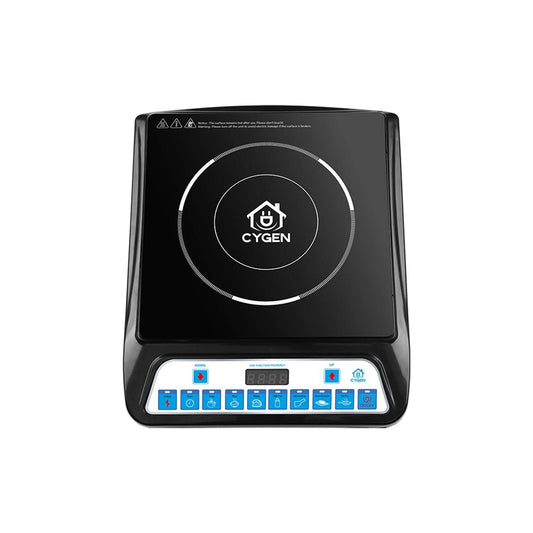
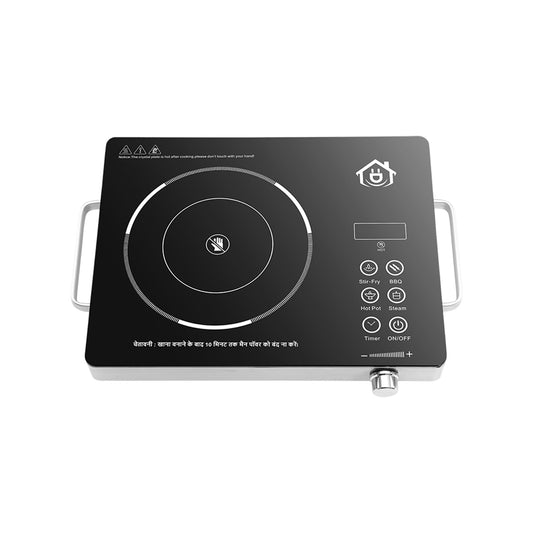
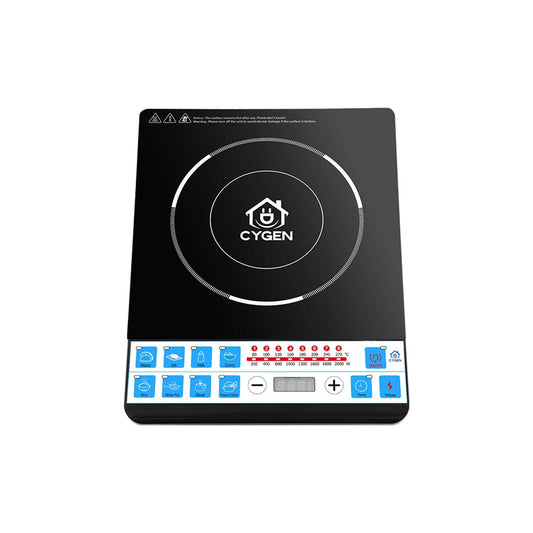
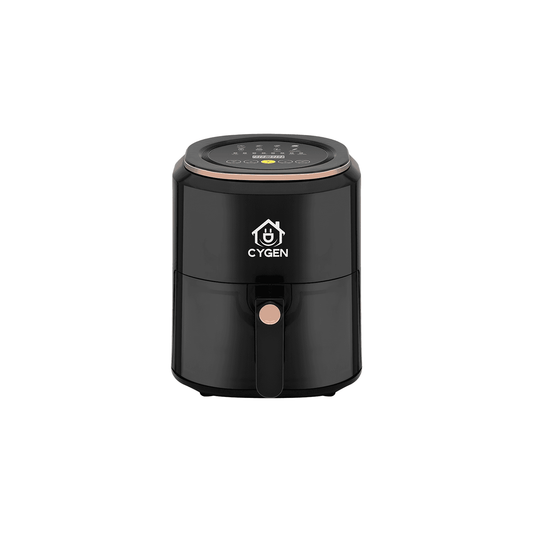
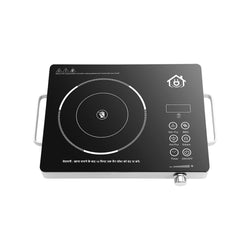
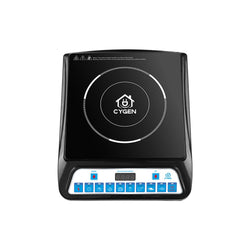
Leave a Reply
Nunc vehicula quam semper odio varius tincidunt. Vestibulum ante ipsum primis in faucibus orci luctus et ultrices posue.
Please note, comments need to be approved before they are published.